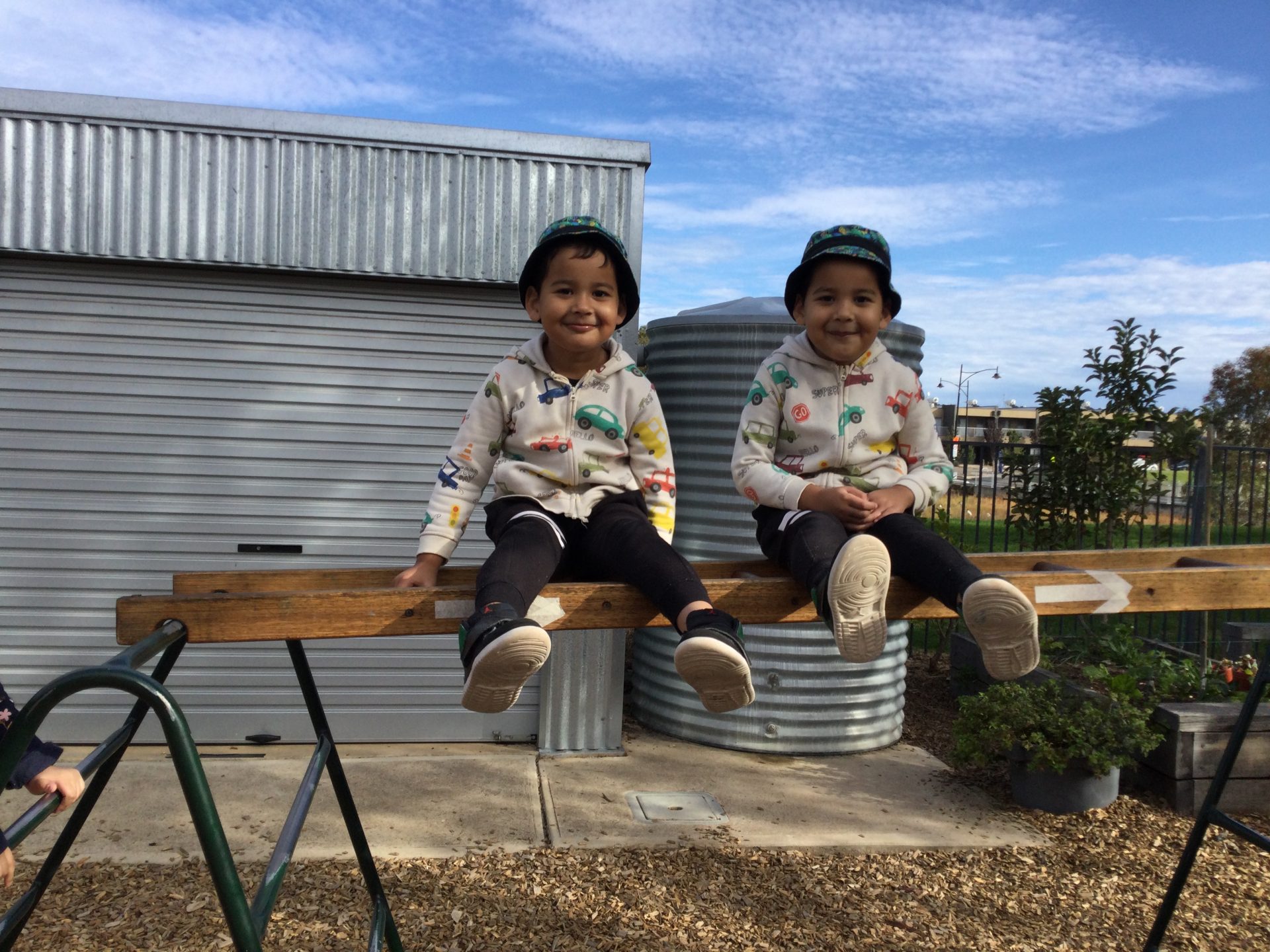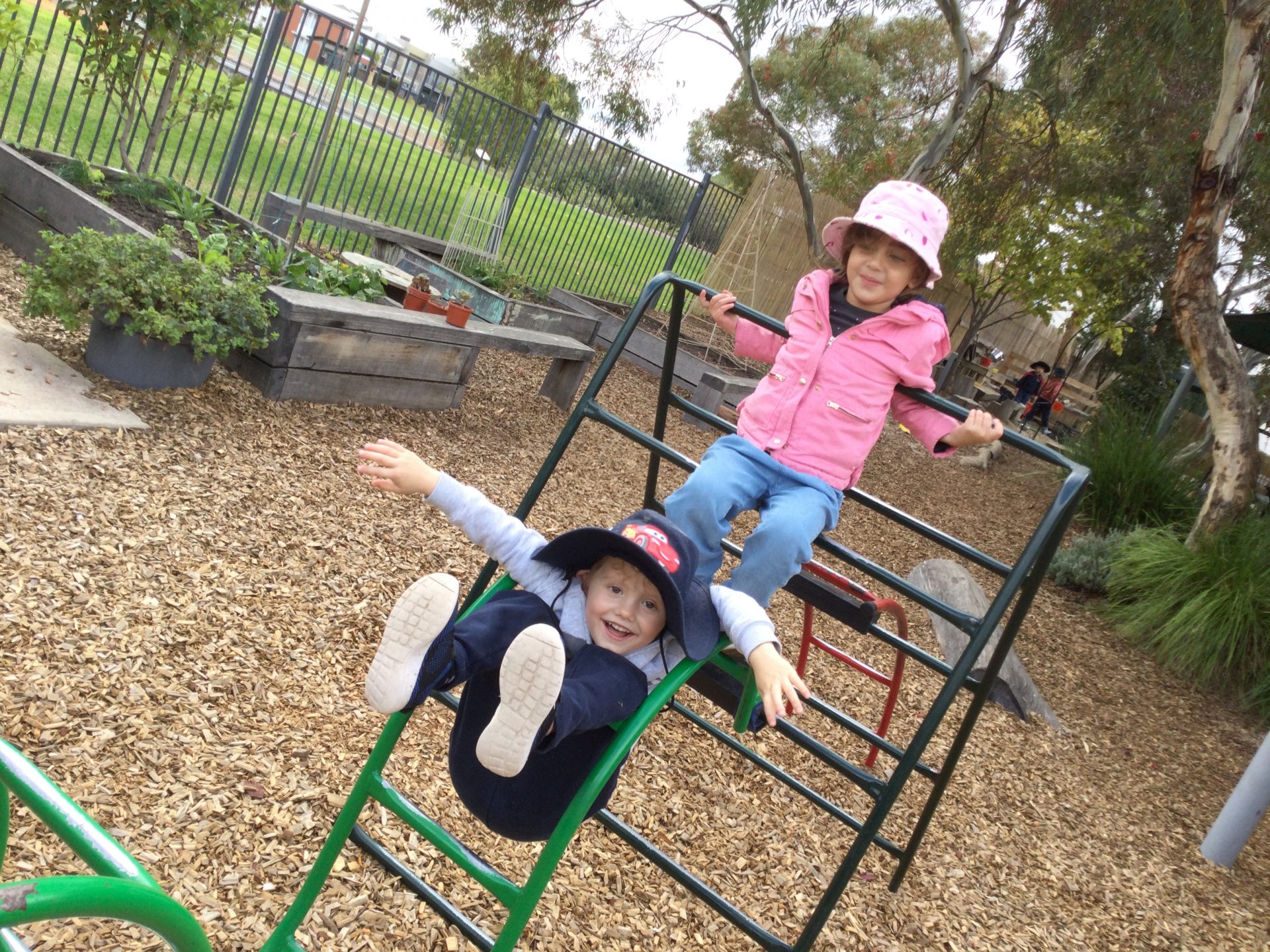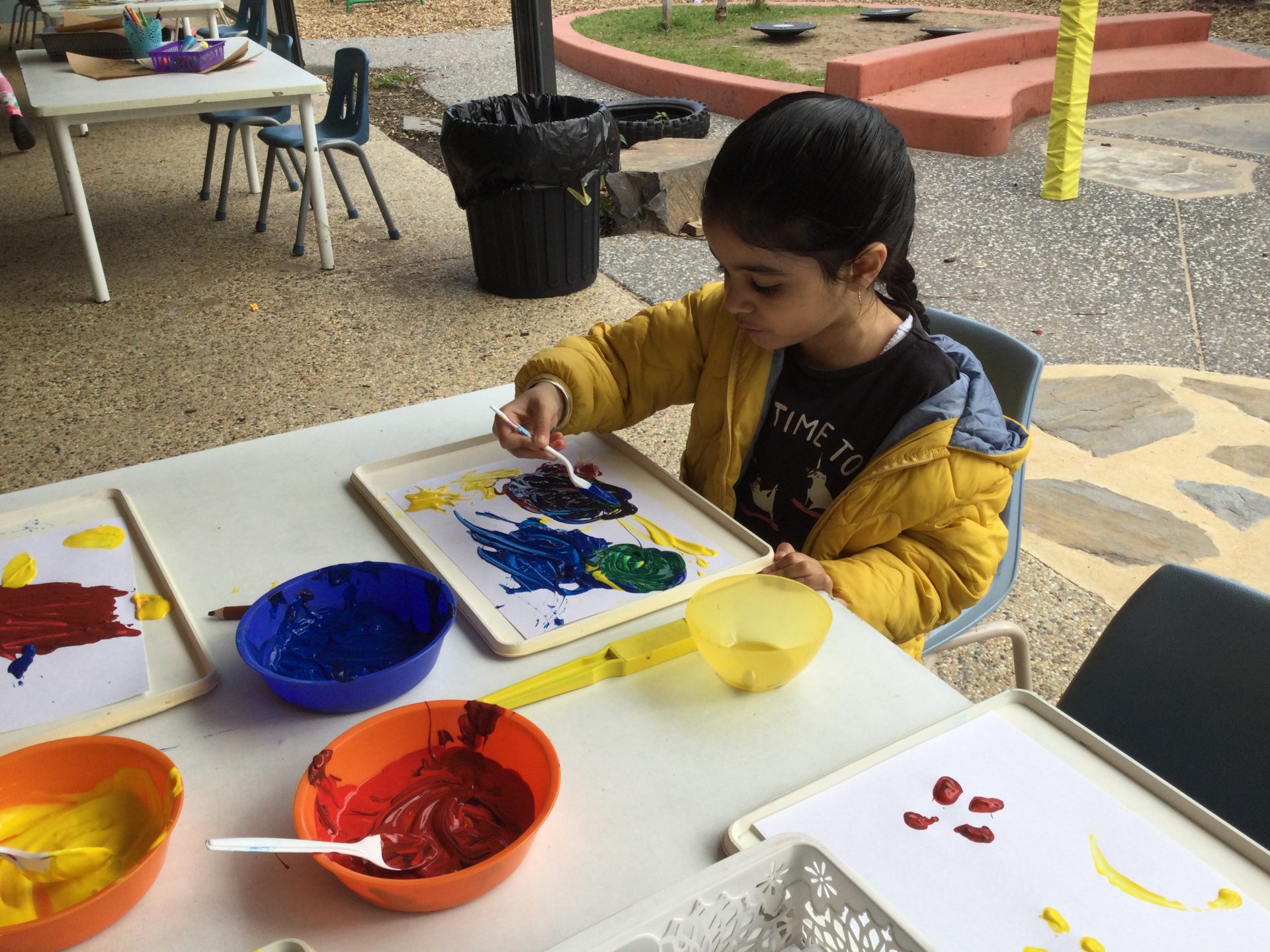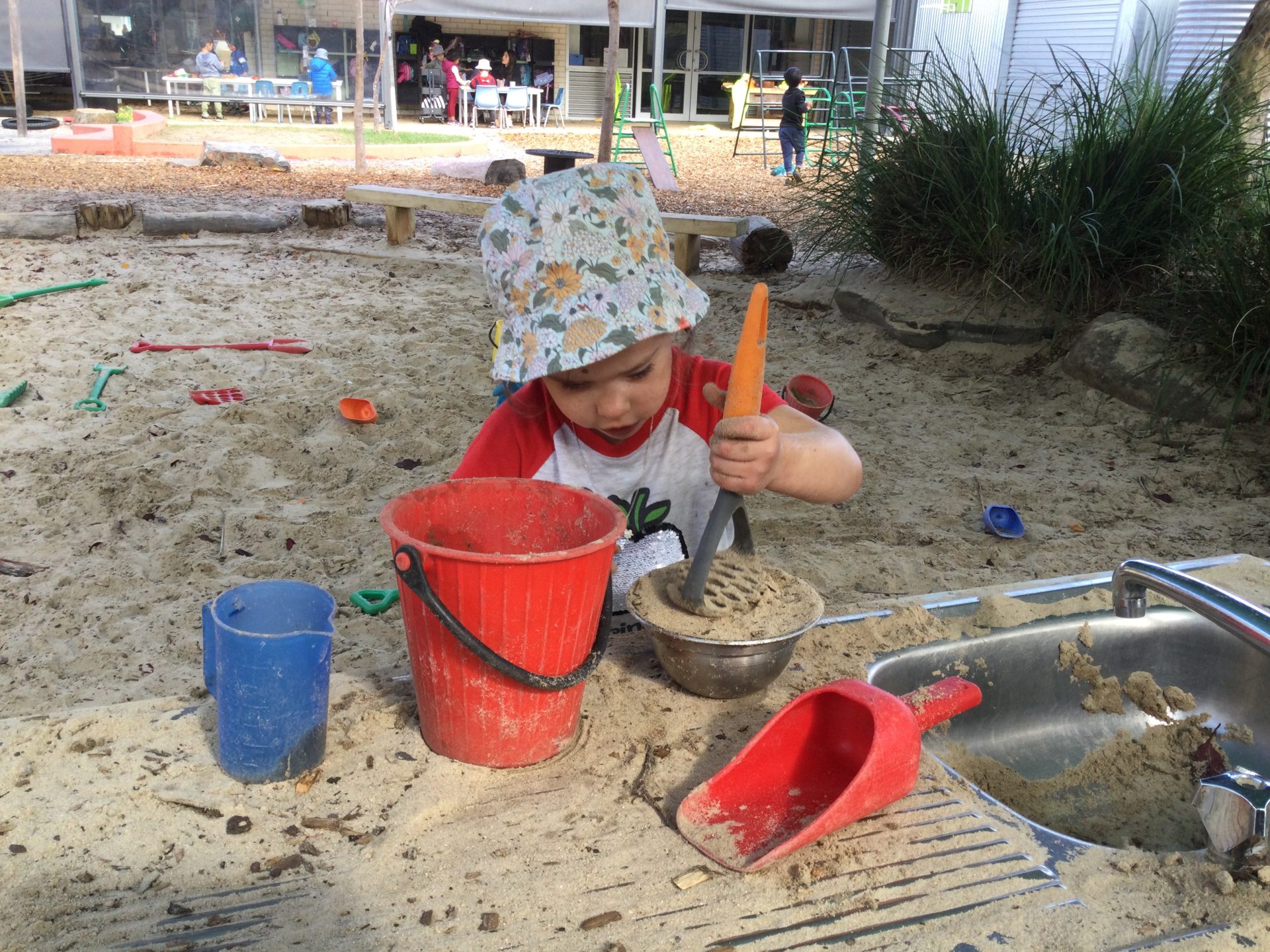Activities for Home

Literacy
Literacy is the capacity, confidence and disposition to use language in all its forms. Literacy incorporates a range of modes of communication including music, movement, dance, storytelling, visual arts, media and drama, as well as talking, listening, viewing, reading and writing. Contemporary texts include electronic and print based media. In an increasingly technological world, the ability to critically analyse texts is a key component of literacy. Children benefit from opportunities to explore their world using technologies and to develop confidence in using digital media. ((Early Years Learning Framework 2009)
At Mawson Lakes Preschool we incorporate literacy in a range of ways both indoors and outdoors. The children take part in literacy small groups where we focus on a range of skills to strengthen and build skills and understanding of syllables, matching rhyme, producing rhyme and initial sounds.
One of the early literacy skills that we learn at Preschool is breaking words into syllables or beats. For example, banana can be broken up into 3 parts ba-na-na. The aim is to say the word as you break it up into the syllables or beats. At Preschool we often ask/encourage the children to clap out the syllables in words, but you can also hop, jump, or stomp out the syllables.
Syllable item Cards and Number Cards
https://www.themeasuredmom.com/6-syllable-activities/
Rhyming Cards
https://thisreadingmama.com/printable-rhyming-activities/
You can print and cut out the syllable cards above to play a variety of games with your child or you may prefer to use a range of everyday items or objects..
You can use the number cards and syllable cards in a range of activities with your child for example
- Use the number cards with your child to sort out the syllable cards, based on the number of claps/beats in the word.
- Encourage your child to place the number cards around a room in your home or outside. Hide the syllable cards and ask your child to find them. When they find a card encourage your child to name the picture and then clap out the syllables in the word. Once they have worked out how many syllables they have, place it on the corresponding number card.
- Place each number card in a bowl or on a plate. Place all the picture syllable cards in a pillow case and encourage your child to put their hand in the pillow case and pull out a card. Ask your child to clap out the syllables in the word and place it on the corresponding number card.
- With your child you can play a variation of “Whats the time Mr Wolf?” and instead of using time you can say “what’s the word Mr Wolf?” Encourage your child to say “What’s the word Mr Wolf?” and you say a word, you can use the syllable card words or a word of your own choice and then encourage your child to step out the syllables in the word.
- Choose an action for your child to complete such as jumping, hopping, star jumps or stomping. Pick out a syllable card and demonstrate how to do the same number of actions as there are syllables in the word. For example, if the chosen action is jumping and the chosen word is bicycle the child would do three jumps as they say the word bicycle.
Another skill we practice at Mawson Lakes Preschool is Rhyming. Rhyming is a crucial early literacy skill that helps children with reading and writing. Rhyming is important as it teaches children how language works. It helps them to notice the sounds within words. Rhyming is a skill you can only learn through exposure and repetition. At Preschool we focus on both recognising and producing rhyme. The ability to produce rhyme is a skill that we would expect children to have mastered at the end of their first year of school.
The first way we teach rhyming is through lots of exposure to a wide range of rhyming experiences. We read books containing rhyming words and talk to the children as we read the book about words that rhyme. We sing nursery rhymes and songs. We also reinforce with the children that rhyming words are words that sound the same at the end of a word. In general conversations with the children, we might comment on words and identify rhymes.
The rhyming words that your child produces do not have to be real words. You can play games where they make up nonsense words. If they rhyme that is great. There are some songs that you could sing using make up nonsense words.
Willoughby Wallaby Woo
https://www.youtube.com/watch?v=bllXwj2b0cM
Down by the Bay
https://www.youtube.com/watch?v=NbXXk8kOoAw
I love to rhyme
Also here are home links to some great rhyming books. There are so many on the internet, but these are some of the books that we use at Preschool. Hope you enjoy.
Please let us know if you find some other great rhyming books that your child loves!
Here Comes The Big Mean Dust Bunny
https://www.youtube.com/watch?v=CO2C47nRrb4
Oi Dog
https://www.youtube.com/watch?v=8WzCjWk2mRw
Oi Frog
https://www.youtube.com/watch?v=2da5yu6rpdg
Pig the Pug
https://www.youtube.com/watch?v=QoggVWS2e2E
Piranhas Don’t Eat Bananas
https://www.youtube.com/watch?v=wSHpeIgKuCo
Rhyming Dust Bunnies
https://www.youtube.com/watch?v=x2NlqL1QiMk
Sheep in a Jeep
https://www.youtube.com/watch?v=CJ365yYZ9W0
Thelma the Unicorn
https://www.youtube.com/watch?v=hkL5O17z52U
The Very Super Bear
We also have a variety of rhyming games that we play at Preschool. Use the link above to the rhyming cards to use in different ways with your child to practice rhyming. Some examples are :
- Rhyming Snap – Each player must take it in turns to put a card down. When two of the same cards are placed on top of each other, the first person to shout ‘snap’ wins the round.
- Match the Rhyming Words: Lay out all the cards and ask you child if they can find two rhyming cards that match
- More Rhyming Words:Hold up one word and see if you child can think of any more words that rhyme with that card.
When focusing on recognising rhyme, show your child two cards that rhyme and one card that does not. Ask your child if they know what each picture is. For example, if you had a dog, a log and a cow, you would ask your child “Is it dog, log that rhyme or dog, cow?” If they are unsure you tell them which words rhyme. If they are unable to recognise the pair that rhymes do not tell them they are wrong, just tell them which words rhyme and move onto the next pair. Remember you cannot teach a child how to recognise the sounds in words they must develop the skill of hearing the sounds that rhyme. This can only be achieved through exposure to rhyme and repetition. We don’t want your child to give up and not have a go because they are always wrong.
Another part of our literacy focus at Mawson Lakes is Book Making. Book writing has always been very popular experience for the children to engage in at Preschool. Creating books is exciting and fun for children – and is a great way to develop a lifelong love of books and reading. As children publish their own books, they:
Develop book-handling skills. Children learn to hold the book right side up and to turn the pages in the correct order.
Learn about book structure. Even the youngest children can begin to recognise the cover, title, and author’s name. By including title pages and “about the author” sections, children learn about the elements of a book and their function.
Build print awareness. Current research shows that many children learn letters and sounds through writing and decoding their own words. Making books provides a personally meaningful context for writing. And children are more likely to be able to decode words they’ve written or dictated.
It’s as easy as stapling a few pieces of paper together into a book and letting your child create with paint, textas, crayons or pencils to make their own book!
Storytelling
Storytelling is a powerful tool and the oldest form of education. Authors use stories to convey meaning, express thoughts and ideas and pass down cultural belief and history. Fairy tales communicate strong, unconscious messages to children in terms they can grasp and even carry into adulthood. This is because these stories possess genuine resonance and dreamlike power. Research and daily observation tell us that story telling:
Improves children language skills
When young children listen to stories they have the chance to hear words presented in a unique way while also hearing speech inflections. Children hear plot building, conflict, climax, characterisation and more.
Improves Listening Skills: ingredients
Most children usually have a lesser attention span and find it difficult to concentrate on something for long. Also, they end up talking more, rather than listening. Storytelling with children ensures that they are not only more attentive but are also keen to listen and understand.
Boosts a child’s imagination and cultural literacy
A child’s imagination is a powerful and unique thing. With this imagination comes a cultural literacy; fairy tales often include different cultures and ways of doing things. They teach children about cultural differences in the world outside their own gifting them a curiosity to learn new things and experience new places.
Develops creative thinking, imagination and problem solving skills
Fairy tales have the ability to develop the capacity to view situations from a completely different, far more imaginative perspective and find innovative solutions for problems. Children use their imagination to visualise the setting, the characters and the story as it unfolds.
Reading to your children…….tips for parents
- Introduce the story by discussing the title, cover, and author/illustrator. Ask the children to make predictions regarding what they think the story might be about.
- Finger pointing,is a common practice for emergent readers. Finger pointing helps the reader learn to look carefully at print. It supports two early reading behaviours, directional movement and voice-print match
- Read the story aloud to the children using appropriate inflection and tone. Pause and ask the your child to make predictions. Ask brief questions to determine students’ comprehension level.
- Ask questions about the story, relate the story to your child’s similar experiences. Ask the children to retell the story in their own words. Children may not be able to read the words yet, but they can read a book by reading the pictures children can begin by sating one thing about each picture
Other helpful resources:
https://www.education.sa.gov.au/our-learning-sa/prior-to-school?field_filter_level_1_tid=15252
Download this whole page here:
Literacy – learning from home instructions document
(PDF, 489KB)
Numeracy
01a Create you own subitising cards
“Numeracy is the capacity, confidence and disposition to use mathematics in daily life … Children bring new mathematical understandings through engaging in problem solving. Spatial sense, structure and pattern, number, measurement, data argumentation, connections and exploring the world mathematically are the powerful mathematical ideas children need to become numerate.” (Early Years Learning Framework 2009)
At Mawson Lakes Preschool children participate in a range of numeracy learning experiences both indoors and outdoor. The children also take part in numeracy small groups where we focus on a range of skills to strengthen and develop skills and knowledge of numerals, counting, subitising (the ability to immediately know how many items in a group without having to count), sorting collections, comparing quantities, using numbers in play, matching, patterning and visual sequencing. We support the development of numeracy skills through a range of play-based experiences including songs games and stories.
During small groups we focus on a range of skills including the 4 top 5 strategy created by Ann Baker. The 4 top 5 looks a range of skills including
1st Top 5
- I can find two that look the same. Sort a collection
- I can match two dot cards that look the same
- I can act out a rhyme
- I can use numbers in play
- I can subitise 1 23
2nd Top 5
- I can ask questions
- I can subitise 4-6
- I can rote count to 10
- I can touch count collections
- I can interact with a counting book
3rd Top 5
- I can understand first and last
- I can find quantities to 3
- I can find quantities to 6
- I can compare quantities – more
- I can follow rhymes that break the counting sequence
4th Top 5
- I can put my subitising cards in sequence
- I can compare quantities – less
- I can play a number games – memory/bingo
- I can subitise non-standard dice patterns
- I can work with doubles
When engaging with numbers it is important to keep it fun and play based for young children and use every day experiences. For example:
- Using dice that have numbers and dots to help your child recognise numbers and amounts. Ask your child, “How many dots are on the dice?”
- When going on a walk ask your child, “What numbers do they see” Talk about house numbers, car number plates and street signs.
- Talk about the numbers on everyday items such as clocks and phones.
- Count when you do jobs or chores around the house.
- Cook simple recipes together and ask your child to count out the ingredients.
- Count with your child the number of buttons as they get dressed in the morning.
- Ask your child to count how many items are in their lunch box or on their plate.
- Count everyday items such as cars, houses, shoes and bags.
- Play action games – ask you children to roll the dice and act out a different action corresponding to the number on the dice
- Play memory or snap with the subitsing or numeral cards
- Read and share stories. Talk about counting, amounts, and the numbers you see in a book. Below are some great counting stories to get you started
- Counting with Tiny Cat – Viviane Schwarz.
- Five Little Ducks – Penny Ives.
- One is a Snail, Ten is a Crab – April Pulley Sayre and Jeff Sayre
- One Woolly Wombat – Kerry Argent
- Ten Little Dinosaurs – Mike Brownlow
Below are some ideas to help explore different Mathematical concepts
01f Organising Data Activities
Other helpful resources:
https://www.education.sa.gov.au/our-learning-sa/prior-to-school?field_filter_level_1_tid=15251
Download this whole page here:
Numeracy – learning from ihome instructions document
(PDF, 130KB)
Nature Play
For children, play is learning. At Mawson Lakes Preschool we strongly believe that providing a play based program, especially one which sees children spending extended time out in nature improves all aspects of child development. There is no better space for children to learn than the outdoors, and there is no better play resource than nature.
One of the best lessons children can be taught in their early years is to play outdoors. Nature play benefits all aspects of child development – physical, cognitive, social and emotional. Playing outdoors grows resilience, self-confidence, initiative, creativity and more. It encourages the joy of movement; it nurtures wild imaginations, experimentation, friendships, social connections and behaviour.
When children are engaged in self-directed exploration, there are more questions than answers, there is the time and space to develop theories and hypothesise about outcomes of each decision, time to make mistakes and use them not as a negative, but as an imperative and integral part of the learning process.
Here are some nature play ideas for you to explore as a family
- Rubbings-Give children a sheet of paper and crayons or coloured pencils to take rubbings of different textures.
- Flower Pressing – Preserve a little piece of your outdoor adventure by pressing flowers. Take a walk with your child to find some of their favourite flowers to press.
- Archaeologist for a day – If you have a sand pit or a clear section in the garden, bury a range of small items such plastic dinosaurs, toys, or blocks. Watch them have fun excavating the dig site for artefacts.
- Daisy chain jewellery– Teach your kids to make daisy chains, or use any other flower that is abundant in your garden
- Decorate a pet rock
- Nature collage
- Animal detective–Search for signs of animals in your garden or on a bush walk.
- Easy outdoor tent
- Shaving cream play
- Experiment with nature- Pick a flower, place it in a glass of water with some food colouring or dye and watch the petals change colour
- Build a scarecrow for your veggie patch
- Go on a bush walk- See how many wildflowers you can find
Helpful Tips
At Preschool we have a big focus on fine motor skill development; cutting, drawing, tracing, painting, printing, creating as well as task orientation; planning, using self-talk, gathering items to use, thinking a task through, working out the steps needed and working with confidence, intrinsic motivation and pride in our work.
You may also enjoy going for a walk or play in a park and gather some interesting materials. Take them home and create items, pictures and designs together. Arrange natural materials on paper; cutting stems and leaves with scissors to create designs that you can then frame and display demonstrating to your child you value their efforts and time spent together!
For more ideas about playing outside and engaging in nature, check out the Nature Play SA website https://natureplaysa.org.au/
Download the whole page here:
Nature Play – learning from ihome instructions document
(PDF, 350KB)
Play ideas
At Mawson lakes we have a big focus on play and creating a play based environment. At preschool we encourage children to engage in all types of dramatic and pretend play, messy play and outdoor play Here is a list of simple and fun activities you can do with children while at home.
- Make and play with play dough (recipe above)
- Create an indoor or outdoor scavenger hunt
- Make an obstacle using pillows, string ,balloons and tape
- Try bowling with water bottles and a ball
- Make a ring toss
- Try some experiments such as baking soda and vinegar – see what happens
- Play stacking, sorting and building games with blocks or Tupperware
- Give your child a cardboard box and see what they can turn it into – cubbyhouse, a boat or a car.
- Make a cubbyhouse using sheets and towels
- Put together a dress-up box of old clothes, fabric or scarves, shoes, handbags and other odds and ends.
- Freeze things in water. Some possibilities – flowers, LEGO mini figures, small toys, coins, etc. Then let your child experiment with different water temperatures to “rescue” what’s been frozen in ice.
- Try yoga
- Make a homemade collage with reusable materials
- Draw self-portraits of each other
- Cook your favourite meal, or try a new recipe
- Play hide and seek
- Dancing – Freeze and stop game
- Try painting with different objects – cars ball shapes / Water in a bucket and paint brush
- Jewellery making using pasta or buttons
- Make your own musical instruments
- Make glue – plain flour and water
- Slime – Lux Soap Flakes and water
- Bubbles – dish soap and water
- Washing babies and dolls clothes
- Make a sock puppet
- Build Tunnels
- Chalk drawing on black paper or outside on the pavement
- Marble/ball run
- Puzzles – Make your own puzzles by cutting up magazine or newspaper pictures or photos
Download the whole page here:
Play ideas – learning from home instructions document
(PDF, 94KB)
Our Learning SA
Resources for continued learning between school and home
https://www.education.sa.gov.au/our-learning-sa
Department for Education trading as South Australian Government Schools & Preschools









